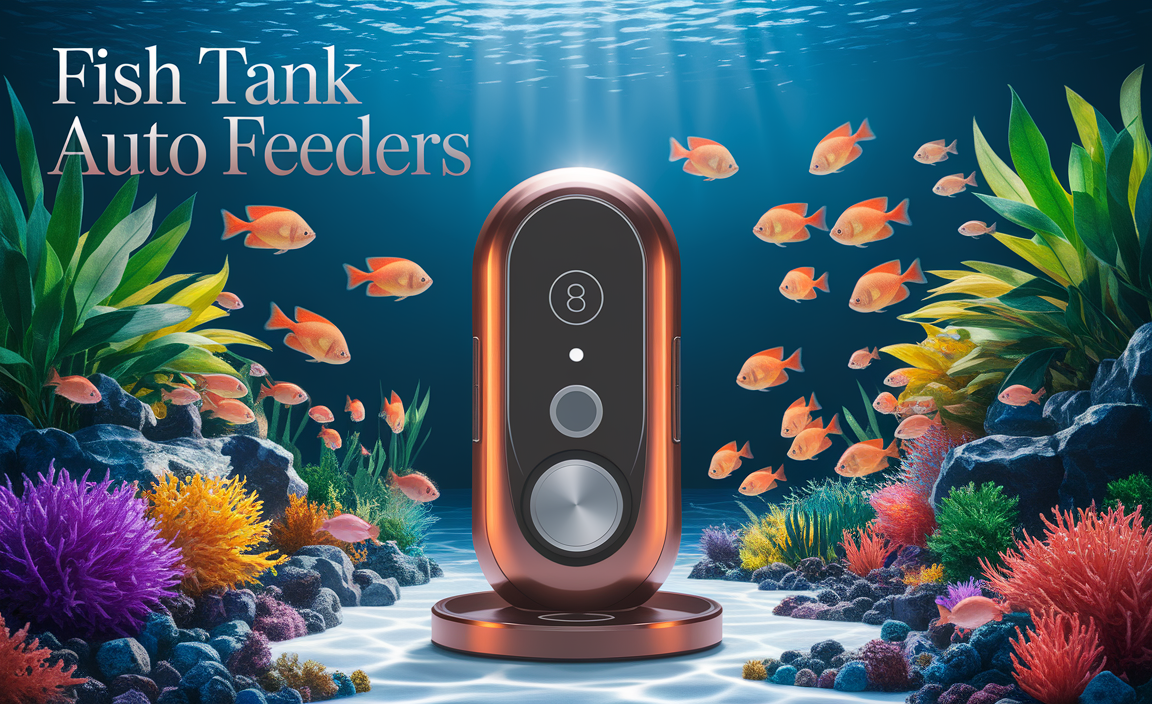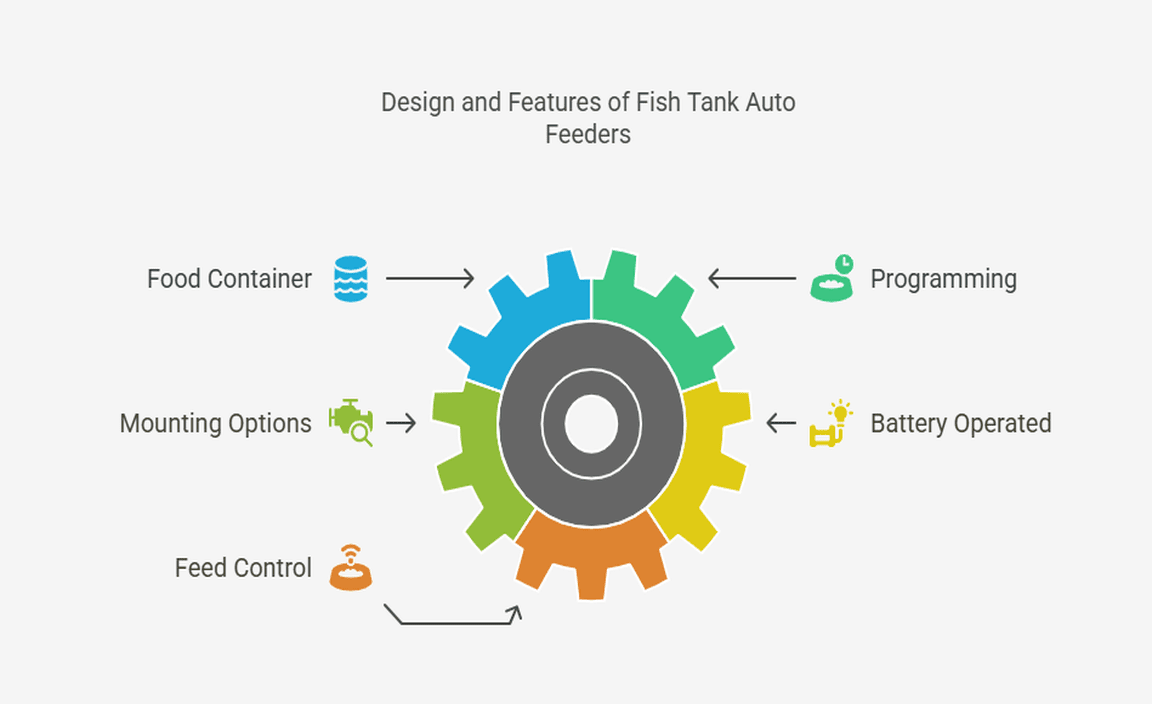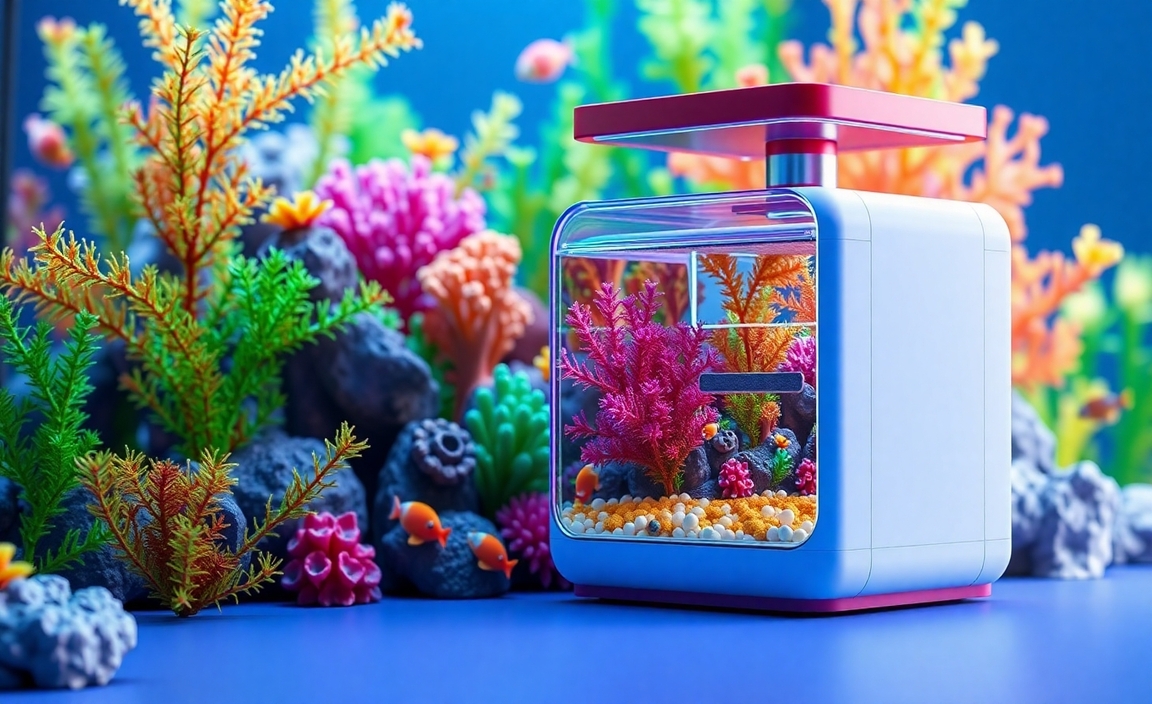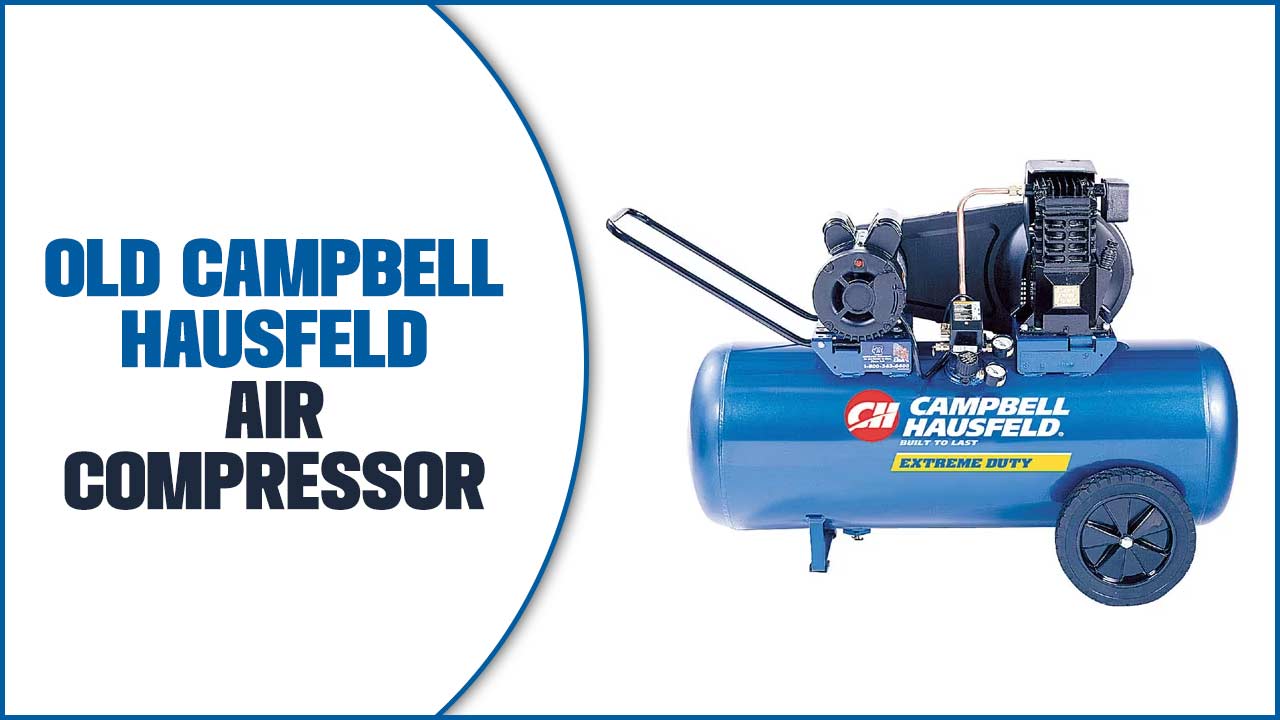A fish tank auto feeder is an essential tool for aquarists who want to maintain their aquariums while ensuring their fish and corals are well-fed.
Whether you have a small tank, large aquarium, or pond, an aautomatic fish feeder offers convenience and precise control over feeding time and helps maintain a healthy environment for your beloved fish. Here, we’ll explore the benefits of fish tank auto feeders, their design, features, and how to use them effectively.

What Is a Fish Tank Auto Feeder?
A fish tank auto feeder is a device that automatically dispenses food at pre-programmed intervals, ensuring that your fish, corals, and other aquatic pets get consistent meals. This is especially helpful for busy aquarists, vacations, or ensuring multiple daily feedings.
Depending on the type of fish food you use, such as fish flakes, pellets, or dry food, there are different types of feeders to choose from. Automatic feeders can accommodate various fish foods, making them suitable for freshwater and saltwater aquariums and ponds.
Key Benefits of Using a Fish Tank Auto Feeder
- Consistency in the Feeding Schedule
- Maintaining Water Quality
- Convenience
Design and Features of Fish Tank Auto Feeders

Modern fish tank auto feeders come equipped with a variety of features to cater to different needs:
- Food Container: This is the storage unit where food is kept. It’s important to choose a feeder with a container that fits the type of food your fish eat.
- Programming: Automatic feeders allow you to program multiple daily feeding times, depending on your fish’s needs.
- Mounting Options: Most feeders can be easily attached to the glass of your tank, whether you have a small tank or a large aquarium.
- Battery Operated: Many feeders run on batteries, making them reliable even during power outages.
- Feed Control: Adjust the feeding amount to ensure your fish gets the right quantity without overfeeding.
How to Choose the Right Auto Feeder for Your Fish Tank

When selecting an auto feeder for a fish tank, you need to consider the size of your tank, the types of fish or corals you keep, and the kind of food you eat. Below are a few top considerations:
1. Tank Size
Choose a compact feeder that fits well without obstructing the tank space if you have a small tank. Larger tanks or ponds may require feeders with bigger food containers and more robust programming options.
2. Fish and Coral Types
Different species have different feeding habits. While fish like bettas can survive on fish flakes, corals like SPS, LPS, and soft corals need specialized food. Ensure the feeder can dispense the right food for your aquatic pets.
3. Water Quality
A good auto feeder will help maintain water quality by delivering the right amount of food without excess waste. Overfeeding can lead to poor water conditions, affecting the health of your fish and corals.
Popular Auto Feeders in the Market
There are many automatic fish feeders on the market, and each offers a unique set of features. Here are some popular brands and products:
1. Fish Mate Auto Feeder
Known for its reliability, the Fish Mate offers precise portion control and multiple feeding options. It’s ideal for fish tanks and ponds.
2. Neptune Systems Auto Feeder
The Neptune Systems feeder integrates with aquarium control systems so that advanced aquarists can better manage their feeding. It can also be controlled via an app, offering more flexibility.
3. Eheim Auto Feeder
This product is highly rated for its programming features and large food container. It is suitable for larger tanks and offers both flake and pellet feeding.
How to Use a Fish Tank Auto Feeder
Using a fish tank auto feeder is simple:
- Set up the feeder by attaching it to the tank using its mounting option. Most feeders easily clip onto the glass of your aquarium.
- Fill the food container with the right type of dry food, such as flakes, pellets, or other types.
- Program the feeding schedule based on your fish’s dietary needs. Ensure the feeding amount is set correctly to avoid overfeeding.
- Monitor water quality regularly to ensure that the feeder is not dispensing too much food.
Final Thoughts
A fish tank auto feeder is a smart investment for any aquarist. Whether you have a small home aquarium, LPS corals, SPS corals, or a large pond, these devices ensure that your fish and corals are fed on time, in the right amounts, and without manual intervention. Plus, they help maintain water quality, which is crucial for the health of your aquatic ecosystem.
FAQs
1. How often should I refill the food container?
It depends on the size of the container and the number of feedings per day. Check the container regularly to ensure enough food for the set schedule.
2. Can I use an auto feeder for shrimp and corals in a fish tank?
Yes, automatic feeders are versatile and can be programmed to feed shrimp and corals, especially if you use specialized dry food designed for these species.
3. Do automatic fish feeders affect water quality?
No, they can actually help improve water quality by ensuring controlled feedings and preventing overfeeding, which leads to less tank waste.
4. Can I program different feeding amounts for different times?
Yes, many auto feeders allow for customized feedings, so you can set different amounts based on your fish’s needs at different times of the day.
5. What happens if the batteries die?
Most feeders will stop dispensing food if the batteries die. Always check the battery level periodically to avoid interruptions and replace them as needed.
Resource:
Tips on improving aquarium water quality: https://www.thesprucepets.com/improve-aquarium-water-quality-1381012
Understanding coral feeding requirements: https://reefbuilders.com/2022/10/10/feeding-corals-a-guide-for-reef-tanks/
Battery care for aquarium devices: https://aquariumscience.org/index.php/8-batteries-backup/
Best fish food types for automatic feeders: https://fishlab.com/best-fish-food/

I am passionate about home engineering. I specialize in designing, installing, and maintaining heating, ventilation, and air conditioning systems. My goal is to help people stay comfortable in their homes all year long.








